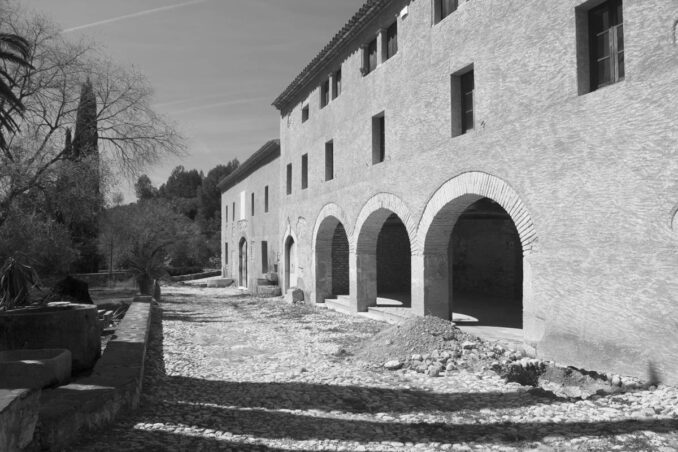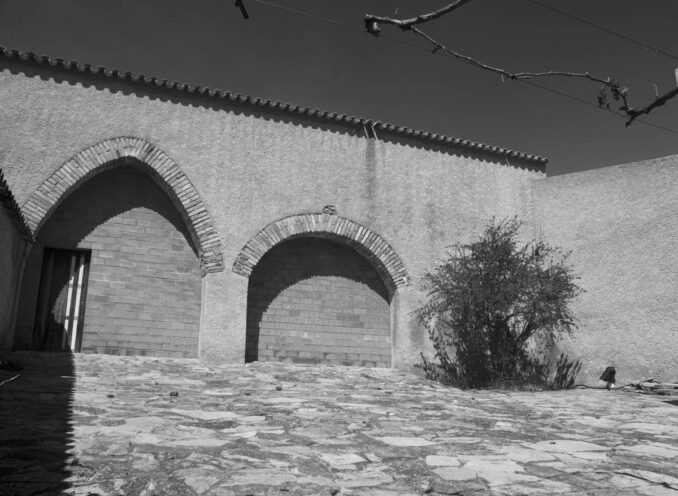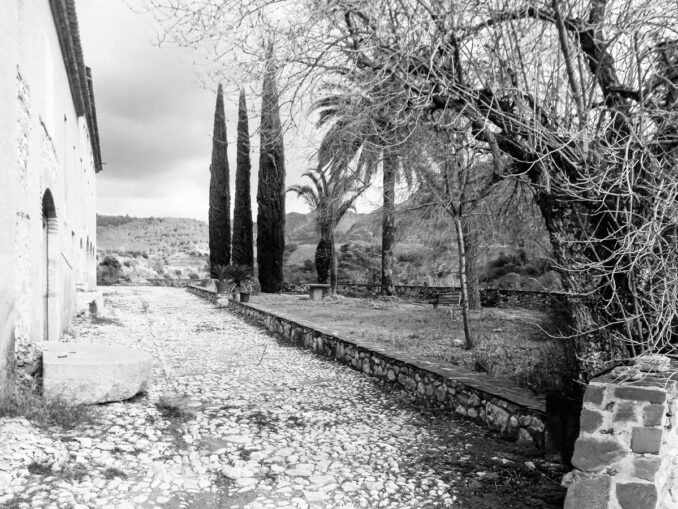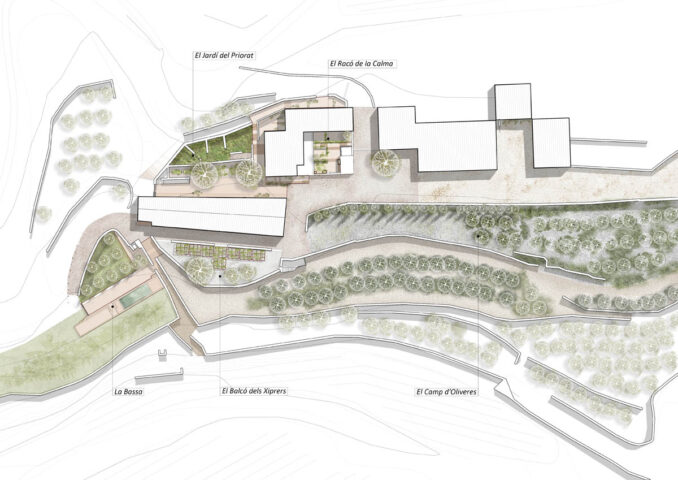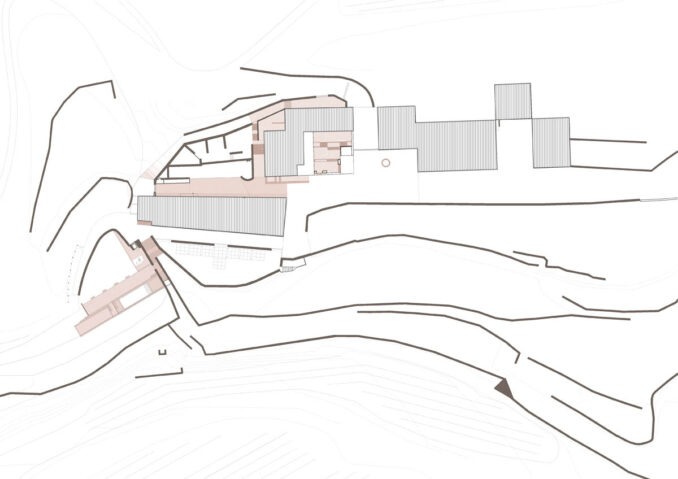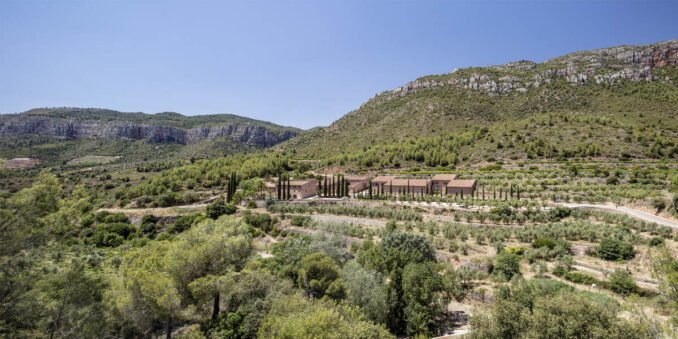
Landscape
The intervention within the vineyards known as El Tancat located in the middle of the Montsant Natural Park, involves the refurbishment of abandoned buildings formerly used for agricultural use belonging to the Escaladei monastery with the intention of converting them into a small hotel connected with the Terra Dominicata winery.
The Terra Dominicata Hotel & Winery landscape project for the exterior spaces was carried out with the utmost respect and aim of preserving the existing setting, its architecture and the ways and customs of nearby villages. The materials, the vegetation, the textures and colours, as well as the traditional ways of building are representative of the place together with its historical and cultural heritage.
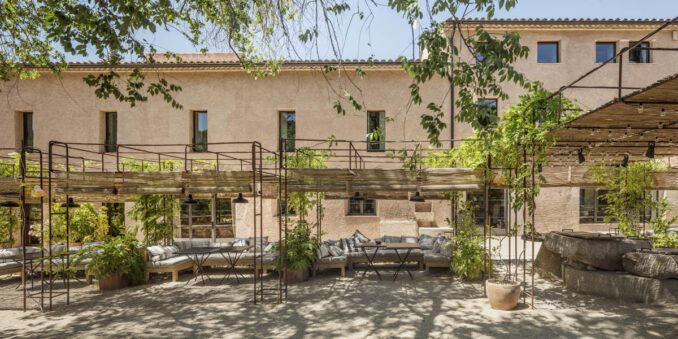
Places
The architectural configuration of the grouping of different buildings recalls a small village with just a few scant houses. Each of the places that result from the juxtaposition of these buildings, and their surroundings have specific characteristics regarding their scale, orientation, relationship with the surroundings and new uses, etc. As is typical of these rural enclaves a nomenclature has been assigned to each of them with the idea of directing visitors and at the same time aiming to create affectionate and cultural terms for these revitalised spaces.
El Racó de la Calma (a corner of calm) is a small courtyard enclosed between old walls and buildings that despite its fascinating character didn’t have a specific use before the refurbishment, because of the steep incline of its paving. The project finds a use for it as an access point to several rooms, located on three different levels, and organised using green screens formed using wire mesh (a commonly used material in the landscape for the construction of fences and guide rails for the vines) and planted with jasmine. These latticework screens define smaller outdoor spaces that provide access to the hotel rooms while also providing privacy to users. The paving as well as the steps and hand rails together with the wall cladding all make use of materials such as brick, plaster of lime, or metal railings, typical of the traditional local palette of building materials.
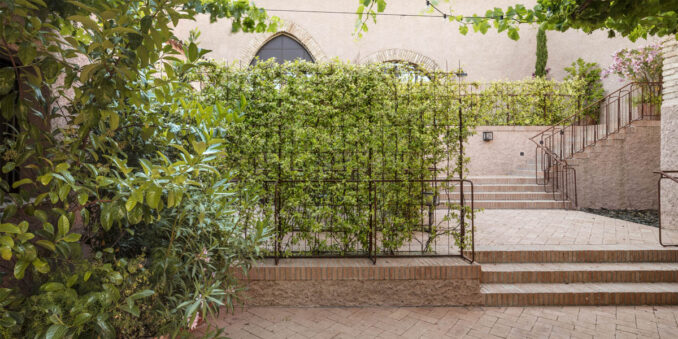
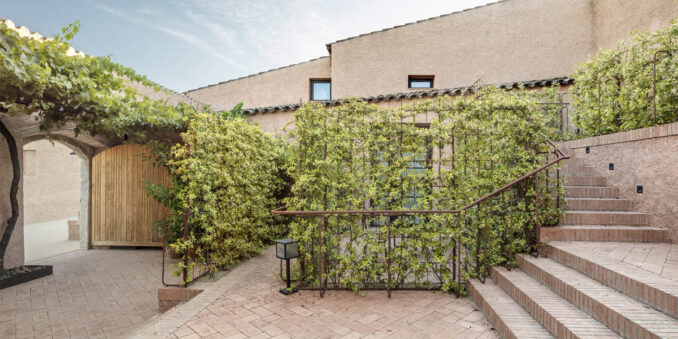
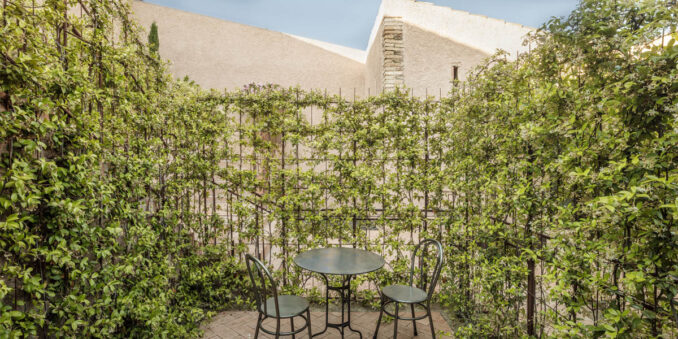
El Balcó dels Xiprers (the balcony of cypress trees) is a crescent shaped space located in front of the main building that leans towards the landscape of the Priorat vines. On this viewing point, belonging to the hotel’s restaurant, there’s a large green pergola built only using metal wires featuring the same methods that viticulturists use for training vines. The climbing plant used here is wisteria, a fast growing deciduous shrub with a spectacular bloom. This plant is used for providing shade in summer, particularly suited for southern gardens with a Mediterranean climate.
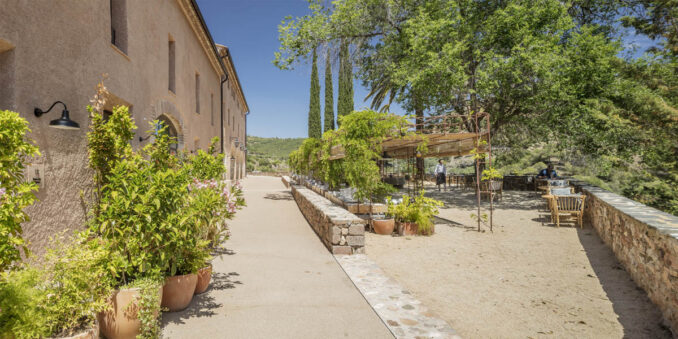
El Jardí del Priorat (Priorat Garden) is positioned in front of the main entrance to the hotel and is laid out respecting the terraces and dry-stone walls. On the level of the entrance there’s a small kitchen garden arranged within timber boxes where fresh aromatic herbs are cultivated for the hotel restaurant. The upper terrace is planted with more than a dozen species of autochthonous species from the Montsant National Park, the idea being to preserve and improve upon the setting’s bio-diversity.
Els Portals (the doorways) are formed at each and every one of the different entrances to the buildings. Because of the configuration and organisation of the hotel’s 25 rooms within the existing building volumes, many of the entrances to the rooms are in fact accessed from the exterior, like the separate entrances to the houses of a small village. Along these lines and as an element of visual protection groupings of planters are arranged housing a multitude of plant varieties following the local traditions of the closest villages such as Escaladei.
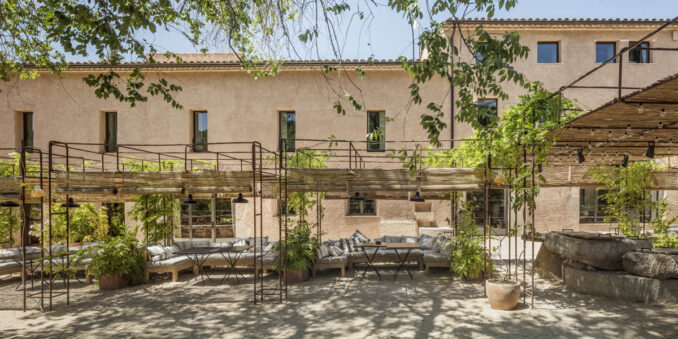
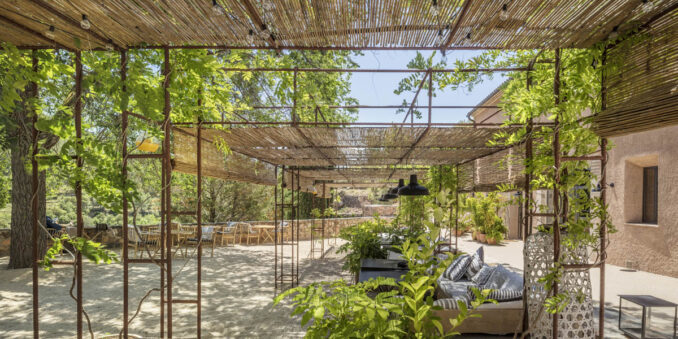
El Camp d’Oliveres (The olive grove) was and remains an olive grove, only now it has been modified to provide a car park for the hotel. The crowns of the olive trees have been pruned to avoid lower branch growth, a covering of gravel has been extended allowing for the earth to breathe and cars to move comfortably, and laurels are added to delimit the terrace and provide extra security and shielding for the vehicles when observed from the main road.
La Bassa (the pond). The hotel swiming pool (“La Bassa”) is conceived as an irrigation reservoir raised above the level of the surrounding land and constructed using typical ceramic materials of the region. It is sited on the edge of the agricultural terrace following its geometry and topography, and in so doing establishing a visual and emotive connection with the magnificent wine-growing landscape of Priorat.

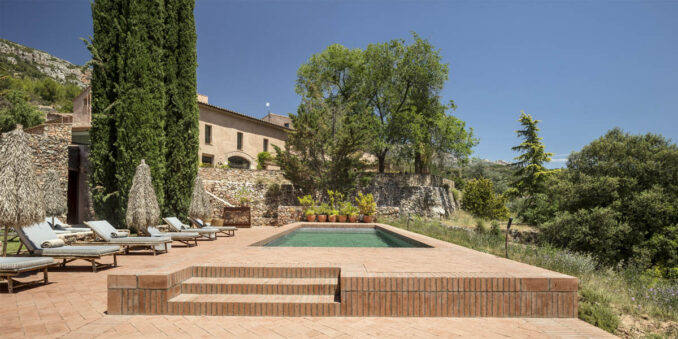
Methods & materials
The Terra Dominicata Hotel & Winery project not only includes ideas and spatial layouts for these rural areas, conceived in harmony with the landscape, but also applies these concerns to the construction techniques employed. These include the recovery and use of methods used in harnessing the agricultural landscape of Priorat, such as the dry-stone walls and metal trellises. Locally sourced ceramic materials are also used, for the construction of paving, outdoor steps and pots. All these techniques have been put into practice with professionals and craftspeople from the closest villages, in this way reinforcing the personal and cultural links with the Priorat landscape.
The vegetation used combines autochthonous species from the Montsant National Park with those used traditionally for covering the facades and entrances of the houses of the nearby villages.
Sustainability criteria
Apart from making use of the methods and materials of the immediate area the other environmental sustainability criteria applied includes:
- Respecting the existing topography, minimising adverse effects on the environs and reducing the impact of earth moving on site to zero.
- Taking advantage of the stones found in old terraces for the construction of new dry-stone walling which form the boundaries and the new access points.
- Filling the water reservoir and supplying the irrigation system with harvested rain water together with water taken from wells and mines on the site.
- Water treatment carried out through natural phytodepuration systems and subsequent return to the existing rainwater filtration system.
- Minimal exterior lighting and flow reduction applied to avoid affecting fauna of the Natural Park.
- Recovery of the autochthonous vegetation of the Montsant Natural Park.
Terra Dominicata Hotel & Winery
Designers: SCOB. Sergi Carulla and Oscar Blasco
Photography: Adrià Goula

